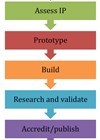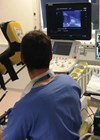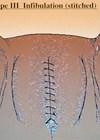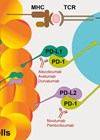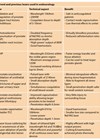Features archive for 2021
Genital gender affirmation surgery for transgender men
Genital gender affirmation surgery (GAS) is the final step in the transition journey for transgender men. Genital GAS involves a combination of procedures to surgically align physical characteristics with one’s gender identity. These needs change between each individual depending on...
The process of medical innovation – evolving trends and future perspectives
In 2018 the United Kingdom Government spending on healthcare totalled almost £166 billion. Of this approximately 65% was attributed to providing curative or rehabilitation therapy, with health-related long-term care and provision of goods accounting for 25%. The remaining was accredited...
Introduction to virtual healthcare job interviews
What’s the best way to run a video job interview? Matthew Wu and Elliott Kozin provide some top tips – both for interviewer and interviewee. The ongoing COVID-19 pandemic has changed almost every aspect of society. For the foreseeable future,...
How can we be SMART with virtual consultations?
At the beginning of 2020, video conferencing and phone consultations accounted for less than 1% of all consultations. Now it is probably 70%. Whilst there are many remote consultation solutions available, Tina Marshall describes what the ideal solution should look...
Visual-estimation (cognitive), image-fusion (software) and in-bore targeted prostate biopsy: is there an optimal approach?
The diagnostic superiority of multiparametric magnetic resonance imaging (mpMRI) prior to targeted and systematic prostate biopsy over systematic transrectal ultrasound-guided (TRUS) biopsy alone in the detection of clinically significant prostate cancer (csPCa) has been proven by multiple level 1 studies...
Management of lower urinary tract foreign bodies
Of all the urological emergencies presenting to the emergency department, perhaps one of the most technically challenging cases is the patient with a foreign body in the genitourinary (GU) tract. A wide variety of GU foreign bodies have been reported...
The impact of FGM on the genitourinary system: a 2021 perspective
Awareness of female genital mutilation (FGM) in European countries has increased over recent decades as a result of globalisation and migration of populations. The World Health Organization (WHO) describes FGM as procedures that involve partial or total removal of the...
Remote working: what can health professionals learn from business?
Remote working has been widely used in business for many years but before COVID-19, this was not the case within healthcare settings. This article seeks to review the advantages, challenges and solutions which users of remote working in business have...
Diving into unfamiliar water – volunteering in critical care
On the 14th and 15th floor of The Royal London Hospital lay rows of patients infected with COVID-19 battling for their lives at The Queen Elizabeth unit. In response to the pandemic, the hospital rapidly expanded their critical care facility...
Priapism
Priapism is defined as an abnormally persistent erection lasting greater than four hours, not associated with sexual desire [1]. Although relatively uncommon with an incidence of 1.5 per 100,000 [2], priapism has a risk of complications which can have a...
Update on immunotherapy for non-muscle invasive transitional cell carcinoma of the bladder
Patients with high-risk non-muscle invasive bladder cancer (NMIBC) that have failed Bacillus Calmette-Guérin (BCG) treatment are a difficult group to treat, and many may not be suitable for the preferred treatment option of radical cystectomy. Bladder-preserving treatments for BCG-unresponsive high-risk...
What is new in lasers for endourology: looking into the future
From the first cystoscopic argon and neodymium-YAG (yttrium-aluminium-garnet) laser used for bladder tumours in 1976 by Staehler et al. [1], lasers have proven to be a versatile and an evolving tool in the therapeutic management of a variety of urological...


